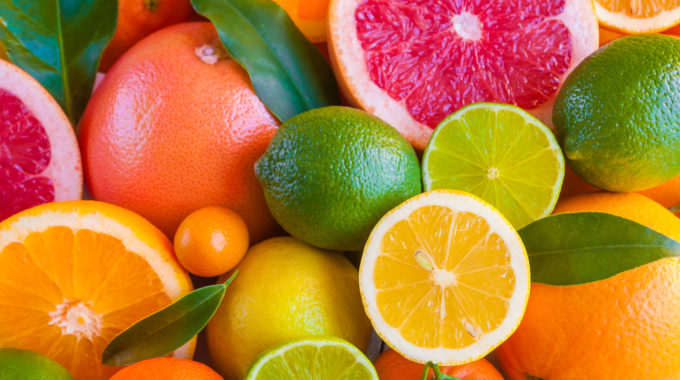In season: Australian citrus
Mother Nature is quite the obliging dame. Just as cold and flu season hits, she brings us an abundance of excellent natural vitamin C sources. Yep, citrus fruits are now in season, and they’re packed with vitamin C. This is used in the body to stimulate the production of white blood cells, which fight infection. Citrus is also rich in phytonutrients, which may help to prevent disease. Throw in a host of other vitamins and minerals, and you’ve got the perfect immunity booster, all wrapped up in one sweet and zesty package.
When it comes to choosing citrus, Australians are spoiled for choice. Whether you’re looking for a sweet snack or a refreshing juice, are wanting to add some zing to a dish or are just keen to try something slightly more unusual, there’s a citrus variety for you. You see, citrus is not just ridiculously good for you; it’s also incredibly versatile in the kitchen.
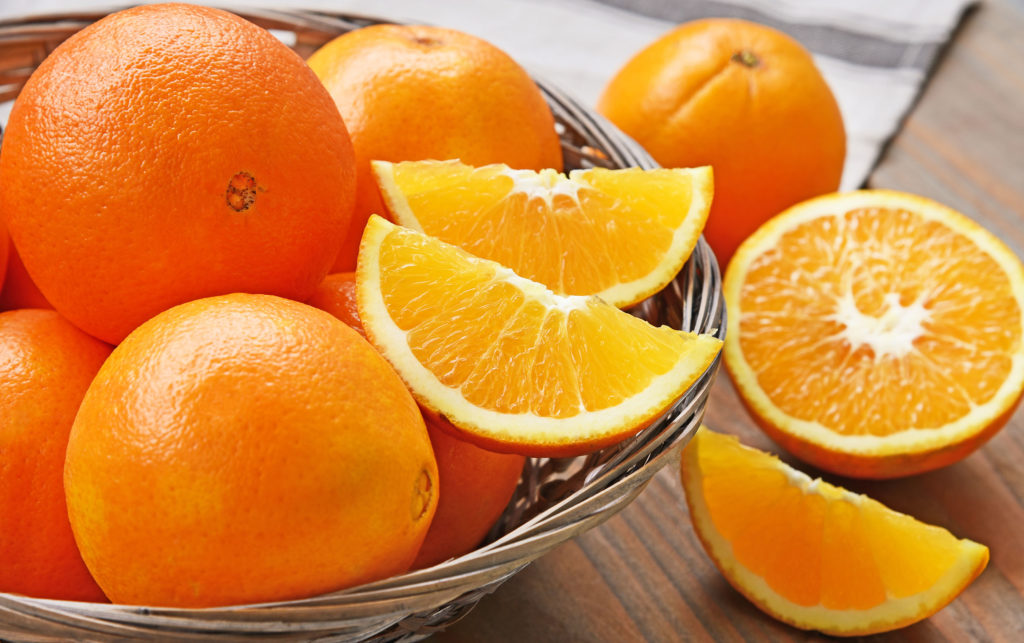
Navel orange
Navel oranges are in season now; they’re available throughout the colder months, from June to October. A single medium-sized navel orange provides you with almost your entire recommended daily intake of vitamin C, to help keep the dreaded lurgy at bay.
Navel oranges are mainly produced in three southern growing regions – the Murray Valley region, the Riverina of NSW and the Riverland of South Australia. While navels are plentiful right now, Valencia oranges, which are mainly grown in the Riverina, aren’t in season at the moment. They’ll return over summer, from November to February.
While navel oranges are great on their own, you can also use them in baking or to flavour sauces or marinades. But if you’re going to use them to make juice, it’s recommended you drink it right away. Navel oranges contain a compound called limonin, which can make the juice bitter if you leave it too long. Also make sure you leave the pulp in, for extra fibre.

Mandarin
Mandarins are available from April to October. Imperials are the most popular of this citrus variety; they’re easy to peel, have few or no seeds, and have an excellent sweet flavour. Mandarins are mainly grown in the Queensland region and certain southern areas.
This lunchbox staple is packed with vitamins A, B and C, as well as calcium, phosphorus and magnesium. Like oranges, mandarins are great for cakes, muffins and puddings. They also add a lovely sweetness to fresh or warm salads, or you can use them to glaze chicken or in sweet and sour pork. You can even use dried mandarin peel to make a refreshing tea.
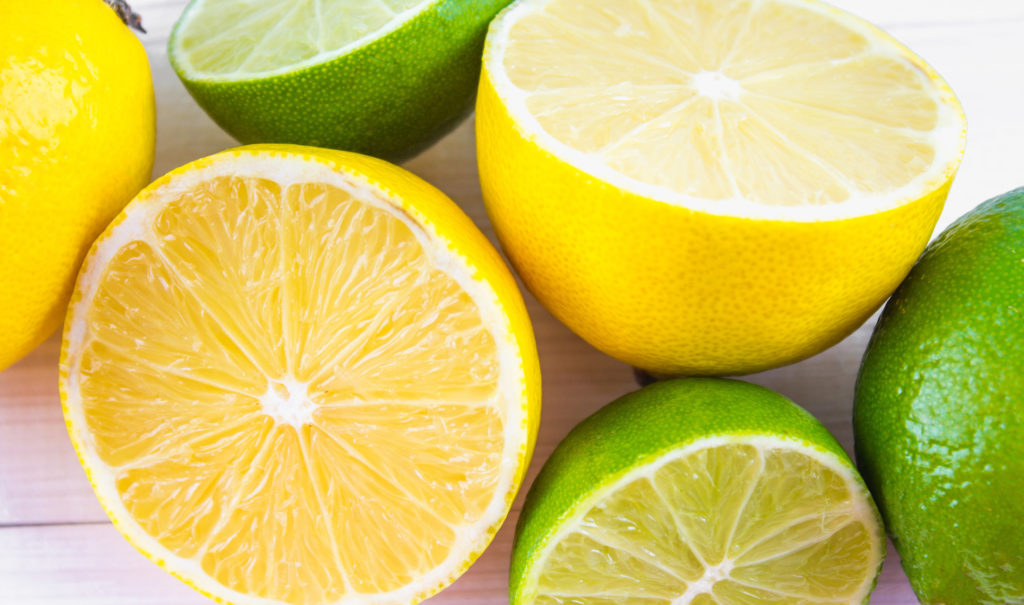
Lemon and lime
Lemons and limes are generally available all year round. However, the best limes are available from January to April, so the peak season has passed.
Lemons are grown in all the major citrus-growing regions of Australia. You’ll find them in the Riverland in SA; the Sunraysia region in Victoria and NSW; the Riverina, central and north coast areas in NSW; and in Western Australia. Early-season fruit is also produced in Queensland and the Northern Territory.
Limes are often imported from the Cook Islands, Egypt, New Caledonia, New Zealand, Spain and the US. But there are still plenty of growers here in Australia, with Queensland being the largest producer. When shopping for limes, ask if they’re Australian-grown.
One of our favourite ways to use lemon is in lemon curd or lemon butter. Once a standard offering at fetes and cake stalls, you don’t see it as often these days. Which is a shame, because it’s absolutely delicious. Lemons are also a delight in sweet baked goods. Try this recipe for a lemon chiffon tray bake, from cookbook author Sally Wise. This zesty fruit can add some punch to a roast lamb or chicken and fish dishes.
Lime juice is ideal for dressings, sauces and vinaigrettes. Try some lime on prawns, in noodle bowls, on tacos, in salsas or in your classic margarita. Cheers.
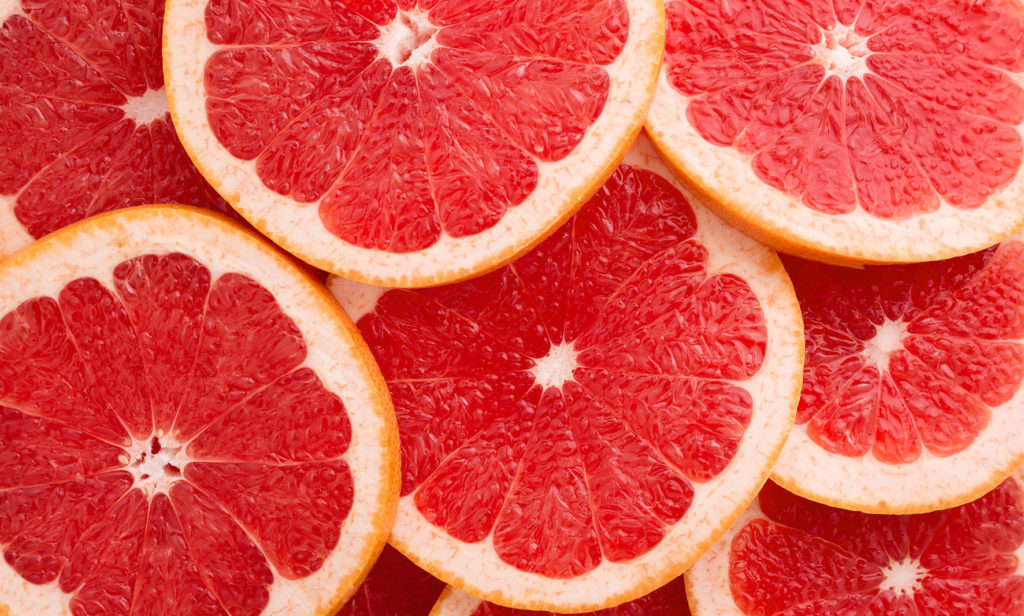
Grapefruit
Grapefruit is also available all year, and there are a number of varieties available including red, white and pink. Most of our grapefruit comes from Western Australia and the Northern Territory, but you can also find it growing in Queensland, NSW and Victoria.
Grapefruits are tarter than oranges or mandarins – they’re like a mix between a lemon and an orange, but with a lovely floral quality. If you find your grapefruit too bitter, don’t drown it in sugar; a sprinkle of salt will neutralise the bitterness. Try using grapefruit in cocktails, salads and desserts. You can also use it in seafood dishes.
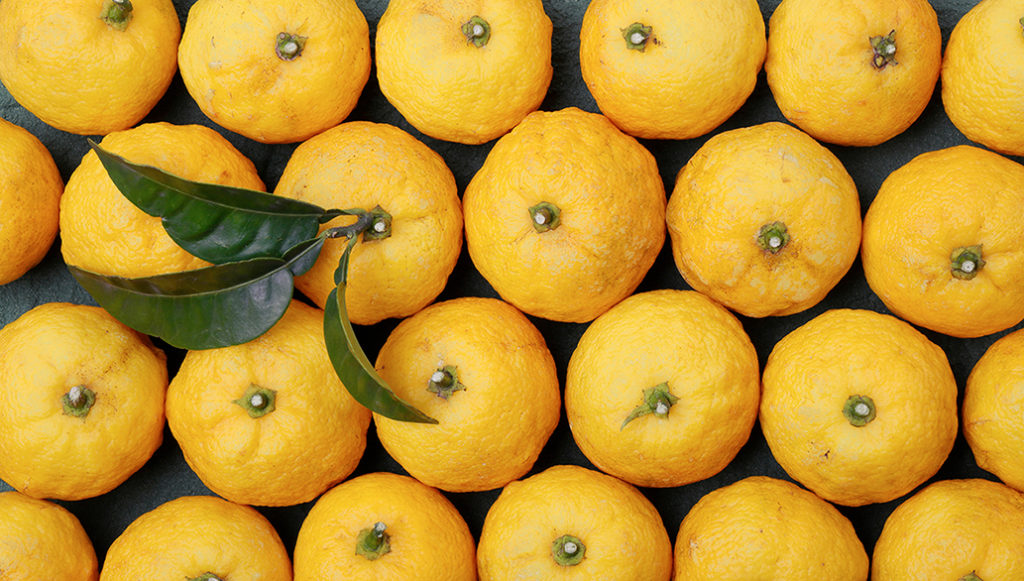
Yuzu
Yuzu is so hot right now. You can find yuzu lamingtons, yuzu gin and beer, yuzu dressing and yuzu olive oils and juice. The trendy citrus fruit has also featured on the menus of top restaurants such as Quay and Tetsuya’s. Despite yuzu being all the rage, only a handful of growers are producing it commercially. In NSW, you’ll find then at Buck’s Farm in Chillingham; in Victoria, they’re grown in Eurobin by Mountain Yuzu; and in South Australia they’re grown by G.M Arnold and Son in Waikerie. Depending on where the grower is, the yuzu season runs from a few weeks to a few months, between February and July.
The zest and juice of yuzu are loved by chefs and home cooks alike, due to the delicious scent and flavour they produce. Some describe it as being like a mix of lime, lemon, and grapefruit. Try using yuzu juice in cocktails or mocktails – but note that it tends to be stronger than lemon or lime juice, so a little squeeze will go a long way. You could also try a drop or two of yuzu juice on fresh oysters or in a ceviche marinade. Sweets also work well with yuzu – try a few drops of yuzu juice in custards or meringues.

Blood orange
This bright red fruit isn’t just delicious; it’s also incredibly good for you. One average-sized blood orange offers a hefty dose of anthocyanins – antioxidants that offer a host of health benefits. They’re the only commercially available citrus fruit to contain anthocyanins; more commonly found in blueberries and cherries. Blood oranges also contain hydroxycinnamic acids, which have antioxidant, anti-inflammatory, antimicrobial and UV-protective effects.
NSW’s Redbelly Citrus has the largest blood orange plantation in the Southern Hemisphere. This farming family has been producing citrus for three generations. You can find Redbelly Citrus at selected stockists in NSW, Victoria and Queensland.
In the kitchen, blood oranges work in a range of sweet and savoury dishes. Try this recipe for blood orange peri-peri chicken with oven-roasted fennel and red onion.

Cumquat
Wee cumquats are the smallest citrus fruit. They’re also probably the least understood. Unlike oranges, you can eat a cumquat with the skin on. The skin of the fruit tastes sweet, but the flesh is tart and piquant. Eating the two together provides a nice contrast. You can also use cumquats in baking, or to make jams, marinades, chutneys or sauces.
Cumquats may be small, but they’re mighty when it comes to nutrients. They’re rich in fibre; vitamins C, E and B3; and potassium, calcium, iron and copper. They’re also rich in beta-carotene, which has powerful antioxidant properties. Before eating, roll the fruit in your fingers a few times. This will soften the skin and make the fruit taste less bitter.
While cumquats aren’t as easy to find as some other citrus varieties, there are some growers producing the fruit commercially. South Australia’s Andrew and Patria Kohler made the switch from stone fruit to cumquats several years ago, and now run The Kumquatery. This offers fresh cumquats as well as a range of cumquat products such as syrups and jams. Cumquats Australia in Cressbrook, Queensland, also offers a variety of cumquat products.
For more on what’s in season over the colder months, check out this advice on seasonal superfoods for a healthy winter from leading dietitian, Susie Burrell.


